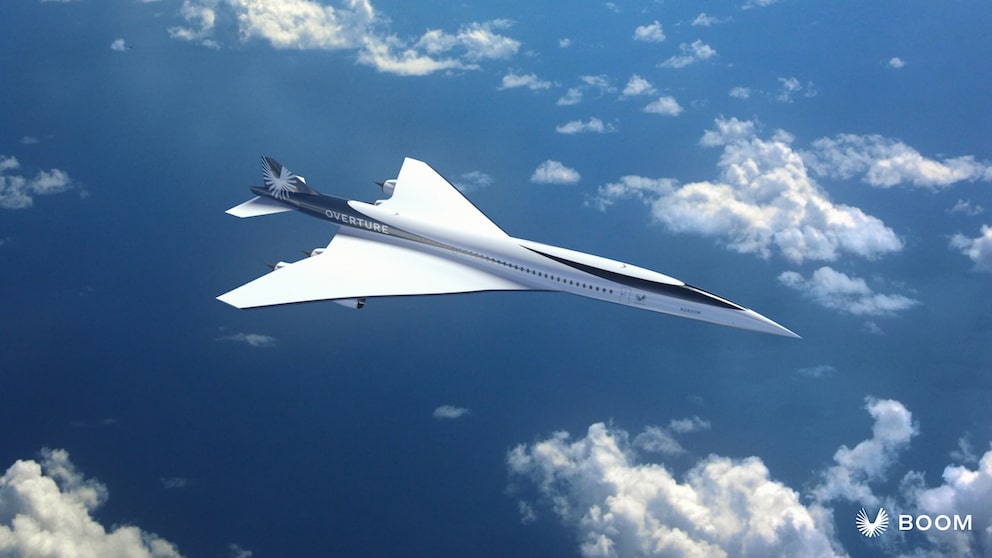January 31, 2025, 5:46 pm | Read time: 3 minutes
Following the decommissioning of the Concorde in 2003, the US company Boom Supersonic has been planning a new version of the supersonic aircraft for some time, with the Overture. Now, the XB-1 has exceeded the speed of sound for the first time during a test flight—paving the way for the return of supersonic passenger aircraft.
The Concorde was a symbol of luxury and speed, taking passengers from London to New York in less than three hours. However, its high fuel consumption, extreme noise levels and the tragic accident in 2000, in which 110 people lost their lives, ultimately led to its retirement in 2003.
Overview
The US-based company Boom is now planning a potential successor to the supersonic aircraft: the Overture. With a cruising speed of 2100 kilometers per hour, the aircraft should be able to fly from London to New York, taking only about half the time of today’s flight. A normal flight on this route takes around eight hours.
Successful Test Flight of the Boom Supersonic Overture Supersonic Aircraft
Today, many reminisce with amazement about the era when ordinary passenger aircraft could fly faster than the speed of sound. The Concorde provided some spectacular moments: Phil Collins, for example, used the supersonic aircraft during Live Aid in 1985 to perform on stage in Philadelphia after his appearance at Wembley. This would have been unthinkable with a normal flight. The US company Boom has been planning for over five years to bring back this type of travel for the masses.
A few days ago, on January 28, 2025, the time had finally come and Boom’s XB-1 aircraft broke the sound barrier during a test flight. For Blake Scholl, the founder and CEO of Boom Supersonic, this represents a decisive step towards supersonic flight. “I’ve been looking forward to this flight since Boom was founded in 2014, and it marks the most significant milestone yet in our journey to bring supersonic flight to passengers around the world,” he said.
Overture Supersonic Aircraft to Become More Environmentally Friendly
Owing to its advanced aerodynamics and low-emission engines, the Overture’s CO2 footprint is anticipated to be on par with that of conventional passenger aircraft. The goal is to reduce kerosene consumption per seat by 30 percent in comparison to the Concorde. The Overture should be able to carry around 80 passengers. Thanks to the comparatively low fuel consumption, it would also be possible to remain profitable with a relatively low ticket price. According to Aeroflap, Boom wants to sell tickets for around 2500 to 5000 dollars for a flight from London to New York—this is comparable to the price of a ticket in business class.

22 hours with an auxiliary tank The World’s New Longest Non-Stop Flight Will Take Off in 2026

Exciting questions and answers What you definitely didn’t know about airplanes

In Service Since 1974! This Boeing 737 Is the Oldest Passenger Aircraft Still Flying
Sonic Booms Are a Cause for Concern
New supersonic passenger planes are likely to face similar challenges as the Concorde once did, which crossed the Atlantic but was banned from many cross-country routes due to its loud sonic booms. These noises occur when an airplane flies faster than sound, creating a shock wave.
However, Boom plans to achieve a sonic boom of only 85 decibels with the Overture, which is comparable to the volume of a major highway. This innovation could pave the way for coast-to-coast flights in the US, a highly profitable route. Yet, the specific technology Boom intends to employ to attain this subdued sonic boom remains undisclosed.

